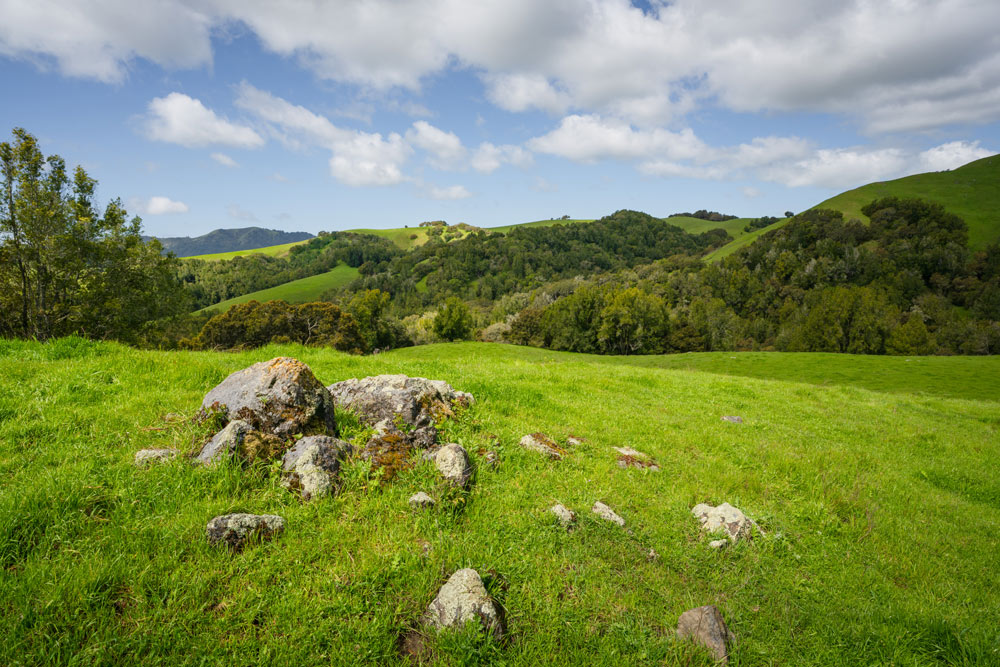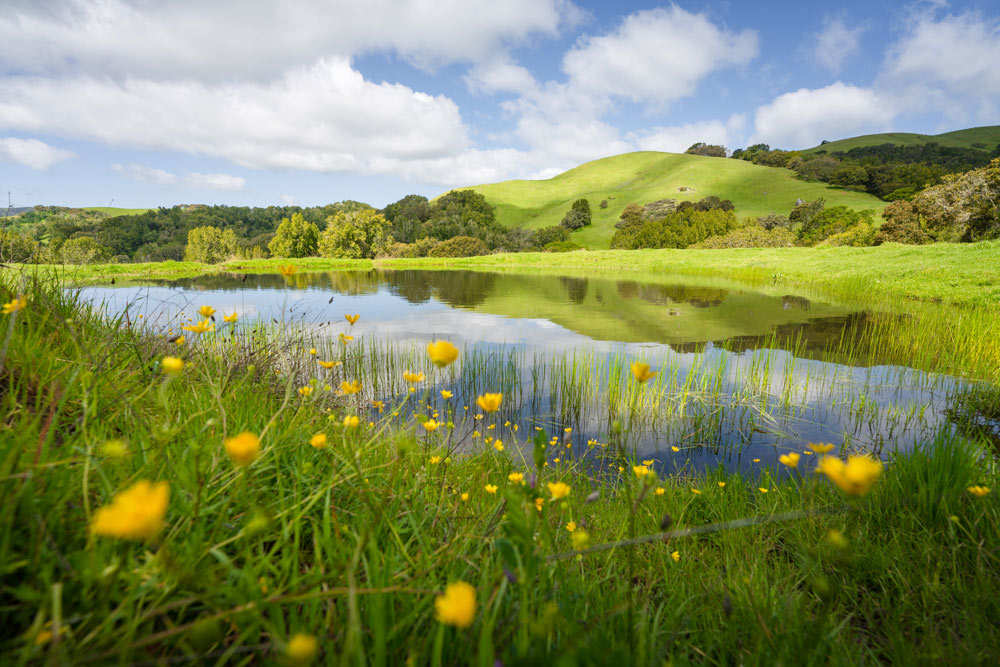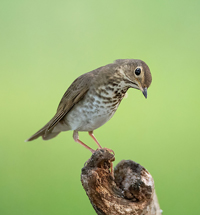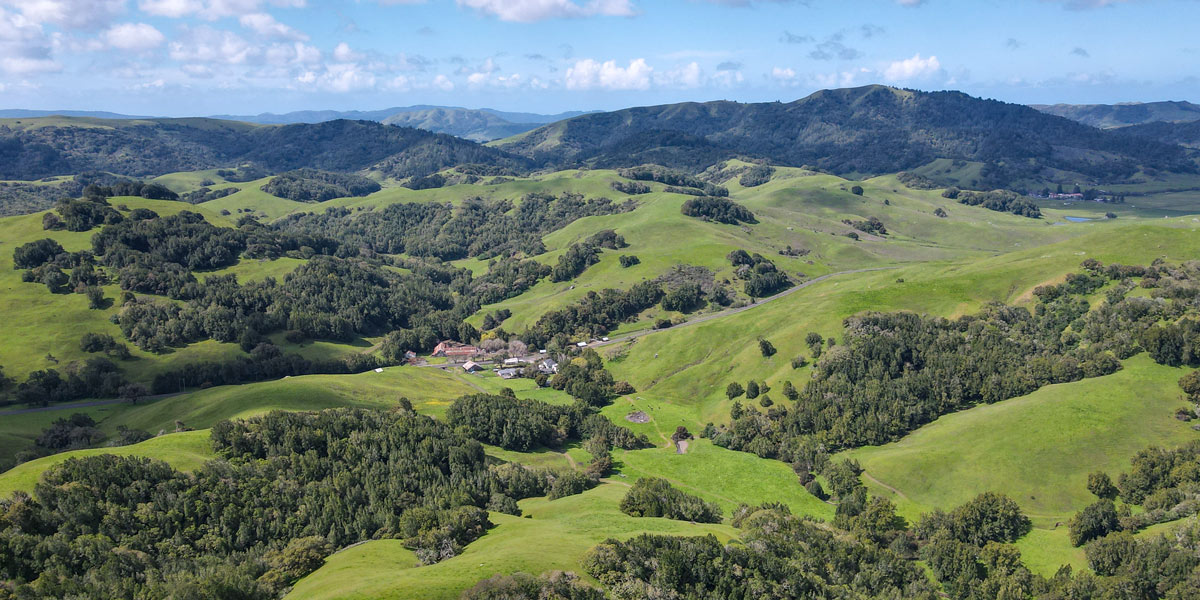Preservation in Perpetuity: Safeguarding the Corda Family Ranch
June 21, 2024
Green light!
In April, the Marin County Board of Supervisors approved $2.5 million in grant funding from the Farmland Preservation Grant Program (Measure A) giving the green light for the conservation of the 903-acre Corda Family Ranch (as well as the Hicks Mountain Ranch). By combining this public funding with donations from community members, we have now secured the future of this agricultural land.
For more than a century, the Corda family has stewarded this ranchland. The agricultural conservation easement the Marin Agricultural Land Trust (MALT) is purchasing from the family is the latest chapter in this ongoing story—another Marin County family’s ranch safeguarded for the benefit of all.
“Once farmland is taken out of agriculture it rarely comes back,” shared Zach Mendes, MALT’s director of land protection. “That’s why we prioritize protecting working farms and ranches. The conservation of places like the Corda Family Ranch locks in the land that enables a viable local food system in the Bay Area and secures the natural infrastructure that protects us amid a changing climate. It’s a win-win across the board.”
The conservation of the Corda Family Ranch adds 903 acres to an existing 14,383-acre contiguous block of existing MALT agricultural conservation easements.
A Legacy of Land Stewardship
Located along Novato Boulevard, the 903-acre Corda Family Ranch occupies an iconic Marin County landscape, including over 600-acres of coastal grasslands, dense oak woodlands, and creekside habitats. As one of the largest ranches within the county, the conservation of this landscape benefits both regional agricultural and biological security.
“My great grandfather bought the ranch in 1912, there’s a lot of my family’s blood and sweat in this soil,” shared Bob Corda. “We’re blessed to have been born into the privilege of the land’s ownership, and to have inherited the responsibility of its stewardship—it’s a lot of work and you have to love it.”
As a testament to this stewardship, much of the ranch looks the way it did a century ago. For decades the family ran a dairy cattle operation amid the industry’s heyday. But like so many small dairy operations in Marin County, the extreme droughts, economic downturn, and federal policy changes of the 1970s forced the family to close their operation, a legacy now iconized in the ranch’s quintessential weathered dairy barns.
Today, the Corda family leases much of the ranch for beef cattle grazing. Continuing to graze their grassland habitats is essential for protecting the region’s biological abundance. And with a MALT conservation easement in place, the family now qualifies for funding through MALT’s Stewardship Assistance Program (SAP), offering the opportunity to further enhance the land’s soil health, water quality, and ecological vitality.




Clean Water for All
The Corda Family Ranch’s expansive pastures also act as natural filters, purifying rainwater as it percolates through the soil, ultimately replenishing groundwater sources and feeding the headwaters of Novato Creek. By preserving this ranch, we will safeguard 3.85 miles of critically important creekside habitat for many threatened and endangered species as well as mitigate the risk of sedimentation, erosion, and pollutants entering our local waterways—it’s about protecting clean water for all.
Water from the ranch eventually feeds into Stafford Lake, a vital source of clean water for nearby Novato residents as well as a destination for local recreationalists. This proactive approach to land conservation reinforces the resilience of local communities in the face of climate change. Large local ranches like this provide the natural infrastructure Marin County residents can rely upon, not just for the food on our tables, but for abundant and clean drinking water.
Click to expand the map.
The protection of the Corda Family Ranch is made possible through the ongoing support of MALT’s donors and Marin County voters. Funding for this $5 million easement comes from two sources: half from the Marin County Farmland Preservation Grant Program (Measure A), approved in April, and half from generous private donations to MALT.
Our protection of this ranch would not be possible without the ability to match our private donations with this public funding. Since its passage in 2012, we have applied for Measure A grant funding to conserve 15 farms and ranches totaling more than 9,725 acres. In total, since 1980, MALT and its partners have now invested more than $100 million in Marin County agricultural land conservation.
“Stewarding this land isn’t just a choice for our family,“ Bob Corda said. “We feel bound to this place the same way we feel to one another. This is home.”
____
The Marin Agricultural Land Trust (MALT) acknowledges that we work in the unceded ancestral lands of the Coast Miwok people of present-day Marin County. We recognize the centuries of attempted erasure, displacement, and genocide these communities have endured and that many inequities exist to this day. We honor with gratitude the land itself and celebrate the ongoing relationship with the Coast Miwok people on their traditional territories. Find more here.